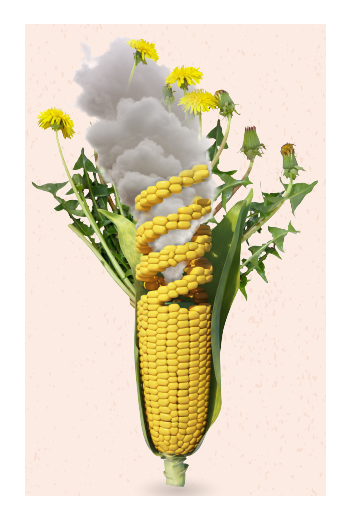


Sign-up for {N}power to get exclusive discounts, newsletters, members-only features, and more!

Drop it into a conversation, and you're likely to spark a discussion defined by opposing viewpoints and conflicting information. In the 1990s, when genetically engineered (GE) corn and soy were first introduced, they were sold as a breakthrough that would benefit both the environment and farmers.1 2 While advocates still claim this is true, the evidence suggests that what GMOs consistently deliver, 25-plus years later, are broken promises to farmers and the planet.3
An April 2022 study published by researchers at Iowa State University is the latest example, revealing another layer to the agrichemical-dependent dilemma of the most widely grown crops in the U.S.4 5 The key takeaway of the Iowa study is that farmers who grow GE corn and soybean are increasing their use of tillage, which is significantly increasing their greenhouse gas emissions (GHG)—and the trend is strongly correlated with the rise of herbicide-resistant weeds, following the widespread adoption of herbicide-tolerant GE crops.6 7
But to understand why it matters first requires some context about the practice of tilling. Repeat tillage is destructive to soil structure, facilitating the escape of greenhouse gases like carbon dioxide from the soil into the atmosphere.8 A 2014 study, for example, comparing conventional till systems to zero-till found that the global warming contributions were 20 percent greater from tilled soil. It also concluded that conversion to zero-till practices could help mitigate climate change within five to 10 years.9
When GE crops first came on the market, they were promoted as a no-till game-changer because the herbicide-tolerant seed technology would allow farmers to manage weeds without tillage by simply treating already planted fields with chemicals, namely, glyphosate.10
 According to the Iowa study, the no-till claims held true as GE corn and soy began to overtake U.S. farmland during the first decade of use. From 1998 to 2008, the acreage of no-till corn and soybeans significantly increased by 12 million and 17 million acres, respectively, and as expected, there was also a reduction in associated GHG emissions.11 However, the pattern shifted after 2008, at the same time that a plague of glyphosate-resistant weeds overtook farms across the country. By 2016, the researchers found that millions of corn and soybean acres under no-till or conservation tillage had reverted to prior levels, and the intensifying tillage completely offset the greenhouse gas mitigation benefits accomplished between 1998 and 2008.12 13 Meanwhile, U.S. farmers were also paying a steep price for crops lost to "superweeds," estimated at one billion dollars by 2014.14
According to the Iowa study, the no-till claims held true as GE corn and soy began to overtake U.S. farmland during the first decade of use. From 1998 to 2008, the acreage of no-till corn and soybeans significantly increased by 12 million and 17 million acres, respectively, and as expected, there was also a reduction in associated GHG emissions.11 However, the pattern shifted after 2008, at the same time that a plague of glyphosate-resistant weeds overtook farms across the country. By 2016, the researchers found that millions of corn and soybean acres under no-till or conservation tillage had reverted to prior levels, and the intensifying tillage completely offset the greenhouse gas mitigation benefits accomplished between 1998 and 2008.12 13 Meanwhile, U.S. farmers were also paying a steep price for crops lost to "superweeds," estimated at one billion dollars by 2014.14
As climate change intensifies, agriculture plays a significant role, accounting for roughly 10 percent of GHG emissions in the U.S. and 25 percent worldwide.15 And this begs the question: if the most widely grown crops in the U.S. are trending in the wrong direction, what are the alternatives?16 The Rodale Institute estimates that we could sequester more than 100 percent of current annual CO2 emissions if we converted all global croplands and pastures to no-till regenerative organic agriculture.17 Their rationale is based on data from more than 30 years of field trials and collaborations with soil scientists doing similar research worldwide.18
Additionally, it’s important to note that organic farms, in general, have superior soil health metrics compared to conventional ones. A 2017 study found that, on average, organic soils contain 13 percent more soil organic carbon than conventional soils and that the potential for long-term carbon sequestration was 26 percent higher in organic soils.19
Our food choices are loaded with impact, one way or another. Let’s choose those that nurture the soil, because when it comes to the future of this planet, these four letters—F-O-O-D—make a loaded word.



Sign-up for {N}power to get exclusive discounts, newsletters, members-only features, and more!